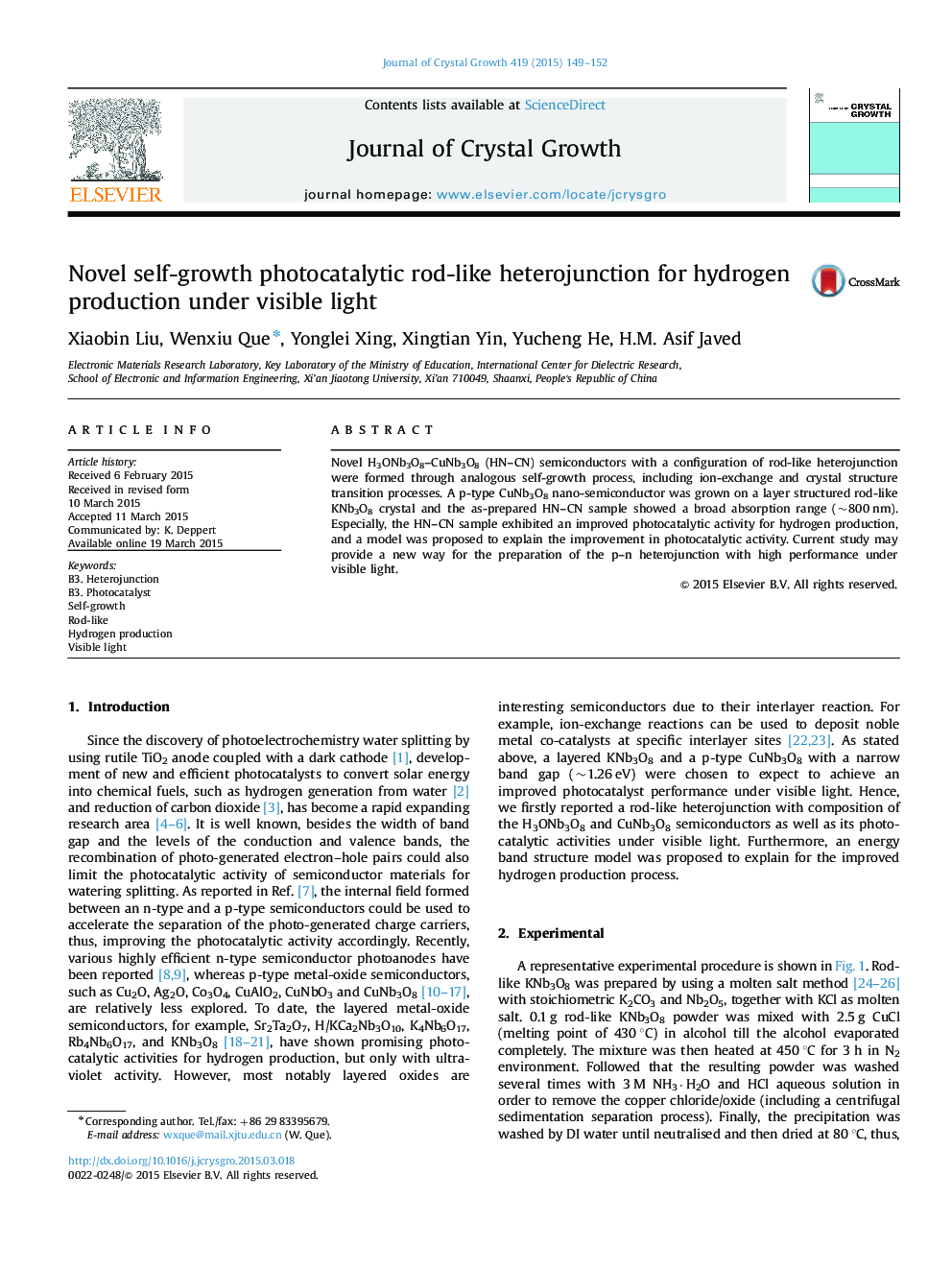| Article ID | Journal | Published Year | Pages | File Type |
|---|---|---|---|---|
| 1790062 | Journal of Crystal Growth | 2015 | 4 Pages |
•Novel H3ONb3O8–CuNb3O8 (HN–CN) semiconductors with a configuration of rod-like heterojunction were formed through an analogous self-growth process.•A possible formation mechanism of CN phase has been proposed, which is crystal structure transition from orthogonal to monoclinic (O–M).•The as-prepared HN–CN sample showed a broad absorption range (~800 nm) and a model was proposed to explain the improvement in photocatalytic activity.•This study may provide a new way to the preparation of the p–n junction for efficient hydrogen production under visible light.
Novel H3ONb3O8–CuNb3O8 (HN–CN) semiconductors with a configuration of rod-like heterojunction were formed through analogous self-growth process, including ion-exchange and crystal structure transition processes. A p-type CuNb3O8 nano-semiconductor was grown on a layer structured rod-like KNb3O8 crystal and the as-prepared HN–CN sample showed a broad absorption range (~800 nm). Especially, the HN–CN sample exhibited an improved photocatalytic activity for hydrogen production, and a model was proposed to explain the improvement in photocatalytic activity. Current study may provide a new way for the preparation of the p–n heterojunction with high performance under visible light.
